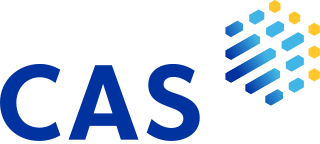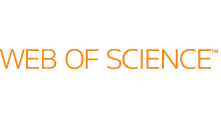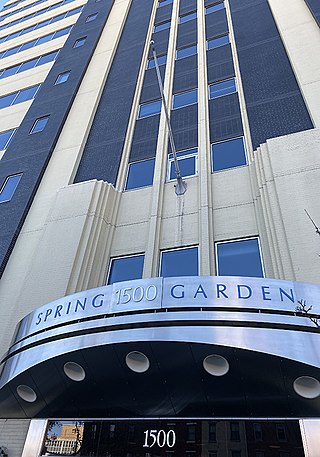
The Thomson Corporation was one of the world's largest information companies. It was established in 1989 following a merger between International Thomson Organization and Thomson Newspapers. In 2008, it purchased Reuters Group to form Thomson Reuters. The Thomson Corporation was active in financial services, healthcare sectors, law, science and technology research, as well as tax and accounting sectors. The company operated through five segments : Thomson Financial, Thomson Healthcare, Thomson Legal, Thomson Scientific and Thomson Tax & Accounting.

Chemical Abstracts Service (CAS) is a division of the American Chemical Society. It is a source of chemical information and is located in Columbus, Ohio, United States.
The Institute for Scientific Information (ISI) was an academic publishing service, founded by Eugene Garfield in Philadelphia in 1956. ISI offered scientometric and bibliographic database services. Its specialty was citation indexing and analysis, a field pioneered by Garfield.
A patent family is a set of patents or patent applications in various countries in relation to a single invention, for example when a first application in a country – the priority application – is extended to other countries. In other words, a patent family is "the same invention disclosed by a common inventor(s) and patented in more than one country." Patent families can be regarded as a "fortuitous by-product of the concept of priorities for patent applications".
The Arts and Humanities Citation Index (AHCI), also known as Arts and Humanities Search, is a citation index, with abstracting and indexing for more than 1,700 arts and humanities academic journals, and coverage of disciplines that includes social and natural science journals. Part of this database is derived from Current Contents.
Espacenet is a free online service for searching patents and patent applications. Espacenet was developed by the European Patent Office (EPO) together with the member states of the European Patent Organisation. Most member states have an Espacenet service in their national language, and access to the EPO's worldwide database, most of which is in English. In 2022, the Espacenet worldwide service claimed to have records on more than 140 million patent publications.
INPADOC, which stands for International Patent Documentation, is a freely available international patent database. It is produced and maintained by the European Patent Office (EPO). INPADOC developed a patent families classification, which groups together patent applications originating from the same priority document(s). It also provides data about the legal status for patent documents in many countries and for large time periods. Although INPADOC is not comprehensive, it keeps expanding the breadth and the depth of its coverage.
EndNote is a commercial reference management software package, used to manage bibliographies and references when writing essays, reports and articles. EndNote was written by Richard Niles, and ownership changed hands several times since it was launched in 1989 by Niles & Associates: in 2000 it was acquired by Institute for Scientific Information’s ResearchSoft Division, part of Thomson Corporation, and in 2016 by Clarivate. EndNote's main competitors are Mendeley and Zotero. Unlike Mendeley and Zotero, EndNote is neither free-to-use nor offers a freemium model.
The Science Citation Index Expanded – previously titled Science Citation Index – is a citation index originally produced by the Institute for Scientific Information (ISI) and created by Eugene Garfield.
Thomson Scientific was one of the six strategic business units of The Thomson Corporation, beginning in 2007, after being separated from Thomson Scientific & Healthcare. Following the merger of Thomson with Reuters Group to form Thomson Reuters in 2008, it became the "Scientific" business unit of the new company. In 2009, the unit came together with the Healthcare division of Thomson Reuters to form the Healthcare & Science division. The healthcare business was sold in 2012 to become Truven Health Analytics. The Science unit of Thomson Reuters provided information services for the academic, business, and R&D communities. It had headquarters in Philadelphia, London, Singapore and Tokyo with about 2,400 staff in more than 20 countries. Its products were Aureka, Delphion, Cortellis, Derwent World Patents Index (DWPI), EndNote, Horizon Global, Horizon Sourcing, IDdb, IDRAC, IP Management Services, ISI Web of Knowledge, MicroPatent PatentWeb, Techstreet Industry Standards, ThomsonPharma, GeneGo, IDDB, Thomson Regulatory Solutions, and Web of Science.
CSA was a division of Cambridge Information Group and provider of online databases, based in Bethesda, Maryland, before merging with ProQuest of Ann Arbor, Michigan, in 2007. CSA hosted databases of abstracts and developed taxonomic indexing of scholarly articles. These databases were hosted on the CSA Illumina platform and were available alongside add-on products like CSA Illustrata. The company produced numerous bibliographic databases in different fields of the arts and humanities, natural and social sciences, and technology. Thus, coverage included materials science, environmental sciences and pollution management, biological sciences, aquatic sciences and fisheries, biotechnology, engineering, computer science, sociology, linguistics, and other areas.

FSTA, also known as FSTA – Food Science and Technology Abstracts, is produced by IFIS Publishing.
The Zoological Record (ZR) is an electronic index of zoological literature that also serves as the unofficial register of scientific names in zoology.

The Web of Science is a paid-access platform that provides access to multiple databases that provide reference and citation data from academic journals, conference proceedings, and other documents in various academic disciplines. Until 1997, it was originally produced by the Institute for Scientific Information. It is currently owned by Clarivate.
Current Contents is a rapid alerting service database from Clarivate, formerly the Institute for Scientific Information and Thomson Reuters. It is published online and in several different printed subject sections.
BIOSIS Previews is an English-language, bibliographic database service, with abstracts and citation indexing. It is part of Clarivate Analytics Web of Science suite. BIOSIS Previews indexes data from 1926 to the present.
SequenceBase is a privately held company, is an international patent sequence information provider with headquarters located in Edison, NJ, USA. SequenceBase develops and markets the SequenceBase Research Portal to the biotechnology, legal, pharmaceutical, scientific, technical and academic bioinformatics communities.
Patent analysis is the process of analyzing patent documents and other information from the patent lifecycle. Patent analysis is used to obtain deeper insights into different technologies and innovation. Other terms are sometimes used as synonyms for patent analytics: patent landscaping, patent mapping, or cartography. However, there is no harmonized terminology in different languages, including in French and Spanish, while in some languages terms are borrowed from other languages. Patent analytics encompasses the analysis of patent data, analysis of the scientific literature, data cleaning, text mining, machine learning, geographic mapping, and data visualisation.
The Index to Organism Names (ION) is an extensive compendium of scientific names of taxa at all ranks in the field of zoology, compiled from the Zoological Record by its operators as a publicly accessible internet resource. Initially developed by BIOSIS, its ownership then passed to Thomson Reuters and is currently with Clarivate Analytics.

Clarivate Plc is a British-American publicly traded analytics company that operates a collection of subscription-based services, in the areas of bibliometrics and scientometrics; business / market intelligence, and competitive profiling for pharmacy and biotech, patents, and regulatory compliance; trademark protection, and domain and brand protection. In the academy and the scientific community, Clarivate is known for being the company which calculates the impact factor, using data from its Web of Science product family, that also includes services/applications such as Publons, EndNote, EndNote Click, and ScholarOne. Its other product families are Cortellis, DRG, CPA Global, Derwent, MarkMonitor, CompuMark, and Darts-ip, and also the various ProQuest products and services.




